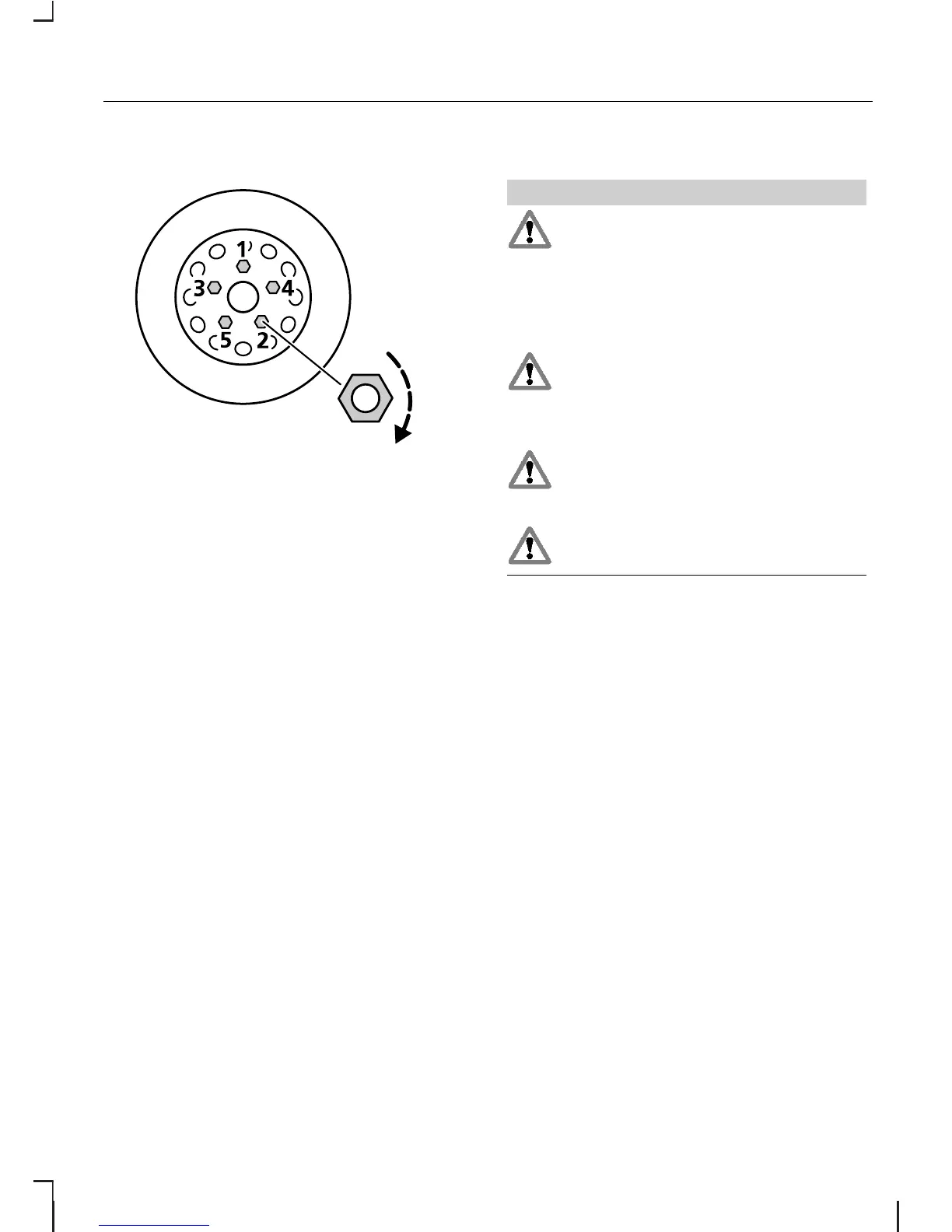1. Fully tighten the wheel nuts in the
pattern shown.
2. Press the hub cap firmly with the
ball of the hand.
3. Stow the locking nut and the
wheel brace safely.
4. Stow the jack and defective wheel
in reverse order and secure them.
Note:
Have the tightening torque of
the wheel nuts and the tyre pressure
checked as soon as possible.
TYRE REPAIR KIT
Your vehicle may not have a spare
tyre. In this case it will have an
emergency tyre repair kit that can be
used to repair one flat tyre.
The tyre repair kit is located in the
spare wheel well.
General information
WARNINGS
Depending on the type and
extent of tyre damage, some
tyres can only be partially sealed or
not sealed at all. Loss of tyre
pressure can affect vehicle handling,
leading to loss of vehicle control.
Do not use the tyre repair kit if
the tyre has already been
damaged as a result of being driven
under inflated.
Do not try to seal damage other
than that located within the
visible tread of the tyre.
Do not try to seal damage to the
tyre’s sidewall.
The tyre repair kit seals most tyre
punctures [with a diameter of up to
six millimetres (1/4 inch)] to
temporarily restore mobility.
Observe the following rules when
using the kit:
•
Drive with caution and avoid
making sudden steering or
driving manoeuvres,
especially if the vehicle is heavily
loaded or you are towing a trailer.
•
The kit will provide you with an
emergency temporary repair,
enabling you to continue your
journey to the next vehicle or tyre
dealer, or to drive a maximum
distance of 200 kilometres
(125 miles).
•
Do not exceed a maximum
speed of 80 km/h (50 mph).
217
Wheels and tyres

